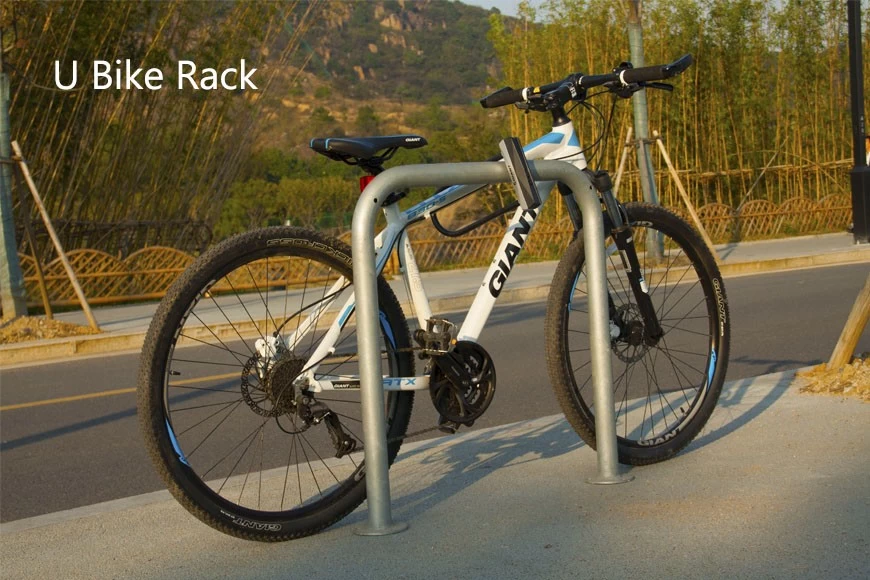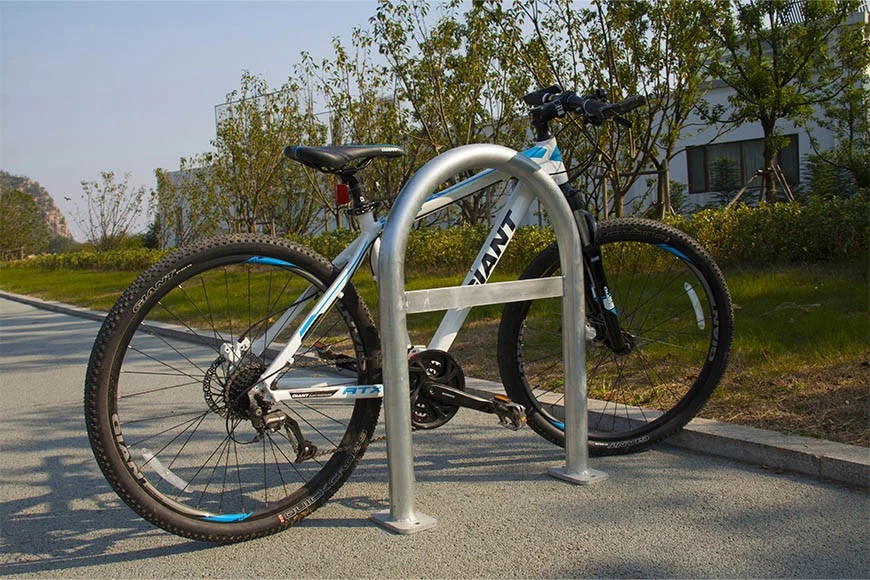Specifications
Model Number : PV-SC-001
Type: Bike parking and storage
Color:Yellow,Black,Green,Red,or Customized.
Style : both indoors and outside
Material : carbon steel
Loading: According to customer need
Size :195*23.2*75cm,200.55*23.2*75cm,or Customized.
Finish: hot-galvanized
Specifications
Model Number : PV-0081-01
Type: Bike parking and storage
Color:silver
Style : both indoors and outside
Material : carbon steel
Loading: According to customer need
Size :Height 1463mm, Depth 1114mm
Finish: hot-galvanized
Model Number : PV-0081-01
Type: Bike parking and storage
Color:Black
Style : both indoors and outside
Material : carbon steel
Loading: 2-10 bikes (According to customer need)
Size :Height 1463mm, Depth 1114mm
Finish: hot-galvanized
Model No.: PV-H1
Size: w605*D400*H330mm
Specification: Round tube:¢16*1.2mm
Finish: Power coated
Net Weight: 1.6 kgs
Packing size:6pcs/ctn
MOQ: 100pcs
Model Number : PV-0024-01
Material : carbon steel/stainless steel
Loading: according customer space size,we can design according the size
Size : W1977*D1130(depend on your parking space)*H2500mm
Finish: Powder coated ,hot-galvanized/electric polish
Packing size :2000*2000*2500mm(40 parking space )
Powder coated ,hot-galvanized/electric polish
Product number:PV-0046-01
Material:carbon steel
Specification:10.2*59*28CM or Customized.
MOQ:100PCS
Port:Shanghai
Trademark:PV
Model Number : PV-0081-01
Type: Outdoor Bike Parking Rack
Style : both indoors and outside
Material : carbon steel
Loading: 2-10 bikes (According to customer need)
Size :170.5*116*148CM
Finish: hot-galvanized
Model Number : PV-0055-01
Type: compact flat pack /slot
Color:black / silver /yellow/optional
Style :Outdoor/indoor
Material : carbon steel/ stainless steel
Capacity : park 6 bikes
Size : L1400*W1054*H840mm
Net weight :38KG
Finish: powder coating / hot galvanized /elctropolishing
Packing size :1490*860*160mm 1pcs/ctn
Product Name: Multi-Capacity Horizontal Two Tier Bike Parking Rack
Material: Carbon Steel
Finish: Powder coated
Post: 80mm * 80mm thickness: 3mm
Steel plate: thickness: 2mm
Dimension: 1325*1890*1830mm
Weight: 370 kg/set
Model: PV-0067-01
Material: stainless steel 304
Pipe: 50 mm* 2.5 mm
Size: 900*700 mm(L*W)
Surface treatment: polishing

Bicycles have emerged as a sustainable and efficient mode of transportation, gaining popularity in urban centers and beyond. As more individuals adopt cycling for commuting and recreation, the demand for secure and convenient bike parking solutions has escalated. This article explores the future of bike parking, delving into current trends and cutting-edge innovations that promise to revolutionize the way we store and secure our bicycles.
The increasing awareness of environmental issues has propelled cycling into the spotlight as a sustainable and eco-friendly mode of transportation.Cyclists contribute to reducing carbon emissions, air pollution, and traffic congestion, aligning with global efforts to combat climate change.The rise of cycling culture is closely tied to a growing emphasis on health and fitness. Cycling provides an accessible and low-impact form of exercise that appeals to individuals of various fitness levels and ages.Commuting by bike allows people to incorporate physical activity into their daily routines, promoting cardiovascular health and overall well-being.Cities around the world are rethinking their urban planning to accommodate and encourage cycling. This includes the creation of dedicated bike lanes, bike-sharing programs, and improved bike parking infrastructure.Bike-friendly initiatives contribute to the creation of more livable cities by reducing traffic congestion and promoting a healthier, more active lifestyle.The economic benefits of cycling, such as reduced fuel costs and minimal maintenance expenses, make it an attractive option for many individuals.Biking offers a cost-effective alternative to traditional modes of transportation, particularly in urban areas where parking fees and congestion charges may apply.
Technological advancements, such as electric bicycles (e-bikes) and smart cycling gadgets, have made cycling more accessible and enjoyable.E-bikes, in particular, appeal to a broader demographic by providing assistance during rides, making cycling a feasible option for those who may be less physically fit or have longer commutes.The rise of cycling culture is driven by vibrant and engaged communities of cyclists who share a passion for biking.Advocacy groups play a crucial role in promoting cycling-friendly policies, infrastructure development, and safety measures, fostering a sense of community among cyclists.There is a cultural shift in how people perceive transportation, with cycling becoming a symbol of a modern, eco-conscious lifestyle.Cities are investing in marketing campaigns to promote cycling as a trendy and efficient mode of transportation, challenging the dominance of cars in urban environments.The rise of cycling culture reflects a multifaceted transformation in societal attitudes towards transportation, health, and urban living. As more people embrace cycling as a mode of transportation and a lifestyle choice, the cultural shift towards sustainable, healthy, and community-oriented living is expected to continue. This evolution not only impacts individuals' choices but also prompts cities and governments to reevaluate and adapt their infrastructure and policies to support the growing cycling culture. The result is a more sustainable, healthier, and interconnected urban landscape that benefits individuals and communities alike.
As cycling becomes an increasingly popular mode of transportation and recreation, cities are facing several challenges in providing adequate and efficient bike parking solutions. These challenges not only impact the convenience of cyclists but also play a crucial role in the overall promotion of cycling as a sustainable and viable means of commuting. Here are some of the current challenges in bike parking:
1.Inadequate Infrastructure:
One of the primary challenges is the lack of proper infrastructure for bike parking in many urban areas. Cities that have historically prioritized motorized transportation may not have sufficient bike racks, parking lots, or designated areas for cyclists to secure their bicycles.Inadequate infrastructure can lead to haphazard parking, where cyclists may resort to locking their bikes to lampposts, fences, or other improvised structures, creating clutter and inconvenience for pedestrians.
2.Limited Accessibility in Public Spaces:
Accessibility to bike parking in public spaces remains a significant challenge. Cyclists may find it difficult to locate secure and convenient parking options near public buildings, parks, transit stations, and shopping centers.The lack of clear signage and designated bike parking areas can discourage cyclists from choosing bicycles as a mode of transportation, particularly if they face challenges finding a safe place to park their bikes.
3.Insufficient Capacity During Peak Hours:
Popular destinations and transit hubs often experience a surge in the number of cyclists during peak hours. The existing bike parking infrastructure may not be able to accommodate the high demand, leading to congestion and a shortage of available spaces.This challenge is particularly pronounced in areas with a high concentration of office buildings, universities, or other institutions where many people cycle to work or study.
4.Security Concerns and Bike Theft:
Security is a significant concern for cyclists, as traditional bike racks may not provide adequate protection against theft. Bicycles are valuable assets, and the lack of secure parking facilities can discourage individuals from investing in high-quality bikes.In areas with a high incidence of bike theft, even cyclists who use proper locking techniques may feel vulnerable, impacting their willingness to use bicycles for commuting or leisure.
5.Lack of Integration with Public Transit:
Many commuters use a combination of bicycles and public transit to reach their destinations. However, the integration between bike parking and public transit systems is often insufficient.The absence of secure and convenient bike parking facilities near transit stations or on public transportation vehicles limits the seamless transition between cycling and other modes of transit.
6.Weather-Related Challenges:
Weather conditions pose challenges for bike parking, especially in regions with harsh climates. The lack of covered or indoor bike parking spaces exposes bicycles to the elements, leading to issues such as rust and wear.Inclement weather may also deter individuals from cycling if they perceive that there are no suitable parking options that protect their bikes from rain, snow, or extreme temperatures.
The landscape of bike parking is undergoing a transformation with the emergence of innovative trends aimed at addressing the challenges associated with accommodating the growing number of cyclists in urban areas. These trends not only focus on improving the convenience and security of bike parking but also incorporate technology and sustainable design principles. Here are some of the emerging trends in bike parking:
Integration of Technology:
Automated Parking Solutions:
Integration with Public Transit:
Comprehensive Infrastructure:
Solar-Powered Bike Racks:
Green Roofs and Integration with Urban Greenery:
Modular Bike Rack Systems:
Artistic and Aesthetic Racks:
Accessible Bike Parking for All:
Bike Parking at Workplaces:
Usage Analytics and Planning:
Smart Maintenance and Monitoring:
Public Participation in Design:
Bike Parking Advocacy Groups:
Certification Programs:
Adoption of International Standards:

Innovations in bike rack designs are revolutionizing the way cyclists store and secure their bicycles. As cities and businesses strive to enhance the cycling experience, creative and functional bike rack designs are emerging to address issues of space efficiency, security, and aesthetic integration. Here are some notable innovations in bike rack designs:
Wall-Mounted Vertical Racks:
Pulley Systems for Vertical Storage:
Sculptural Bike Racks:
Customizable and Themed Racks:
Modular Bike Rack Systems:
Foldable and Collapsible Racks:
Bike Racks as Seating:
Bike Racks with Planters:
Enclosed and Lockable Racks:
Smart Locking Systems:
Covered and Indoor Bike Parking:
Weather-Adaptive Materials:
Bike Repair Kiosks:
Charging Stations for E-Bikes:
QR Codes for Information:
Digital Displays and Information Panels:
As we look ahead to the future of bike parking, several predictions and speculations emerge, driven by technological advancements, urban planning trends, and a growing emphasis on sustainability. While the future is inherently uncertain, these speculations provide a glimpse into potential developments in bike parking infrastructure:
Automated Bike Parking Facilities:
Smart Transportation Ecosystems:
Biometric Access and Authentication:
Blockchain for Secure Bike Registration:
Green Roof Bike Parking Facilities:
Solar-Powered Charging Stations:
Smart Materials for Durability:
Flexible and Adaptive Rack Designs:
Crowdsourced Bike Parking Solutions:
Localized Customization:
AR Navigation for Cyclists:
Interactive AR Displays:
Community Spaces and Events:
Cafes and Amenities:
International Standards for Bike Parking:
Global Initiatives for Bike-Friendly Cities:
As the world shifts towards more sustainable transportation options, the future of bike parking is evolving to meet the demands of a growing cycling culture. Innovations in smart technology, environmentally friendly designs, and collaborative urban planning are reshaping the landscape of bike parking. By embracing these trends and fostering a bike-friendly environment, cities can not only encourage cycling but also address challenges related to congestion, pollution, and inadequate transportation infrastructure. The future of bike parking holds exciting possibilities that can contribute to creating healthier, greener, and more livable urban spaces.